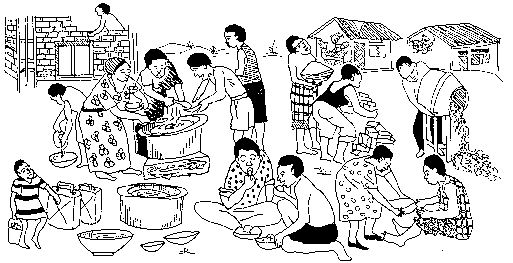Tweet
Translations:
'العربية / al-ʿarabīyah
Bahasa Indonesia
Български език
Català
中文 / Zhōngwén
Deutsch
English
Español
Euskara
Ewe
Filipino/Tagalog
Français
Galego
Ελληνικά / Elliniká
हिन्दी / hindī
Italiano
日本語 / Nihongo
Kiswahili
한국어 / Hangugeo
بهاس ملايو / Bahasa Melayu
Português
Română
>తెలుగు /Telugu
ไทย / Thai
Türkçe
اردو / Urdu
Other formats:
UNITY ORGANIZING
Bringing the Whole Community Together
by Phil Bartle, PhD
Training Handout
The "normal" condition of any community is that it has several social schisms
You saw earlier that you should ensure that women attend the community meetings you call (exception: conservative Islamic communities).
Also: the disabled, the youth, the aged, the very poor, the disenfranchised, the marginalized, the shy and retiring. This is part of your strategy of unity organizing the community.
See Unity Organizing. Every community has forces pulling it apart.
These may be based in differences in clan, ethnic group, religion, class, gender, age, education, physical and mental abilities, occupation, income, wealth, land access (owner, tenant, squatter, other) and other characteristics that divide people. See Social Schism.
It is important that, as a mobilizer, you are seen as neutral (like a referee), not allied to or favouring any faction.
This means you must know the community very well. If you spend much time with some people, others may feel you are biassed.
Do not be afraid in public to mention the differences and factions in the community, but then quickly point out that you are not aligned with any faction or factions.
Remember, too, that you are not aiming at making the community homogenous (all the same), but unity of the community means all factions are loyal to the community as a whole and, in an atmosphere of tolerance, all people understand and respect all others, irrespective of religion, class, clan, gender, ability, wealth, ethnicity, language, or age.
A unified community is a pre-requisite to identifying a single community priority problem and goal.
––»«––
Community Contribution:
 |